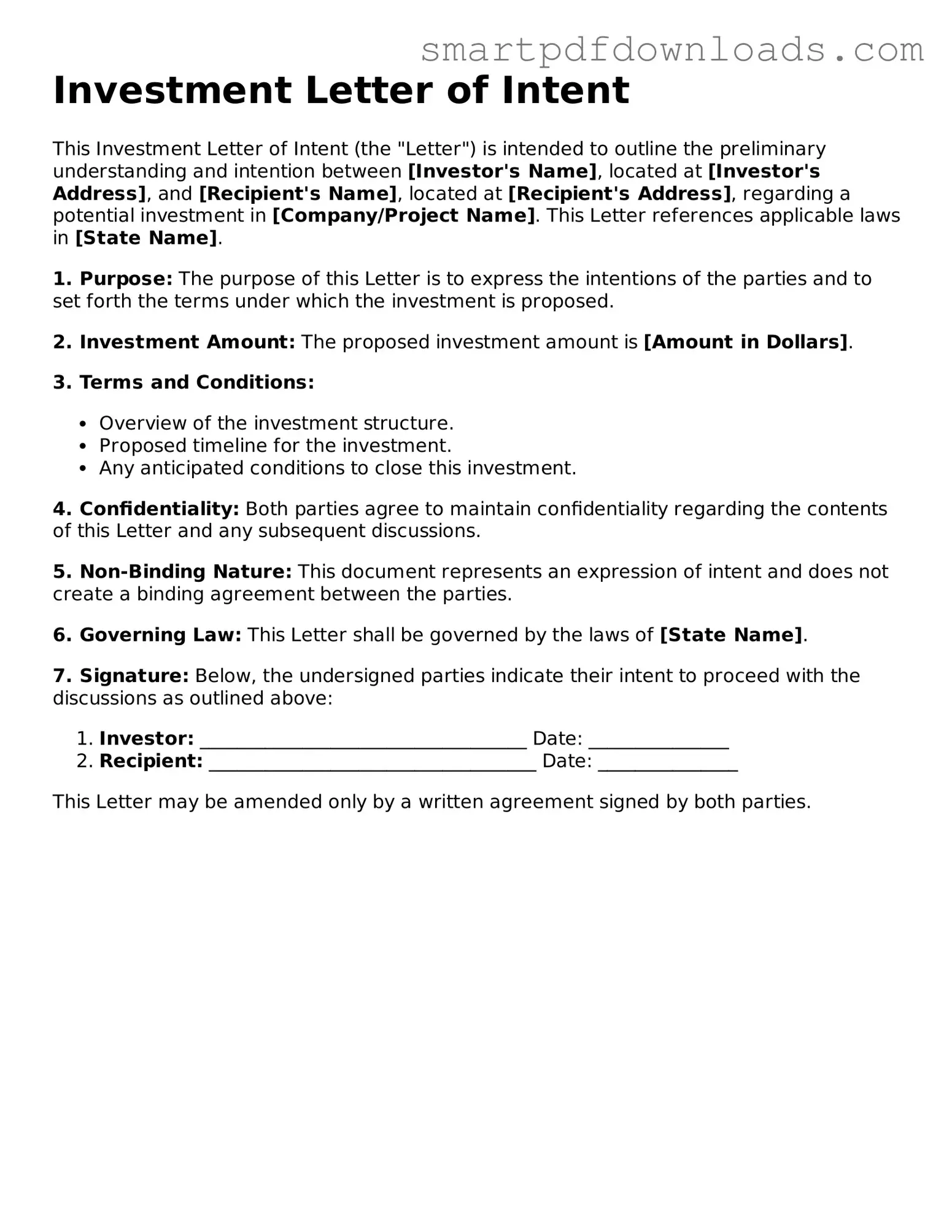Investment Letter of Intent
This Investment Letter of Intent (the "Letter") is intended to outline the preliminary understanding and intention between [Investor's Name], located at [Investor's Address], and [Recipient's Name], located at [Recipient's Address], regarding a potential investment in [Company/Project Name]. This Letter references applicable laws in [State Name].
1. Purpose: The purpose of this Letter is to express the intentions of the parties and to set forth the terms under which the investment is proposed.
2. Investment Amount: The proposed investment amount is [Amount in Dollars].
3. Terms and Conditions:
- Overview of the investment structure.
- Proposed timeline for the investment.
- Any anticipated conditions to close this investment.
4. Confidentiality: Both parties agree to maintain confidentiality regarding the contents of this Letter and any subsequent discussions.
5. Non-Binding Nature: This document represents an expression of intent and does not create a binding agreement between the parties.
6. Governing Law: This Letter shall be governed by the laws of [State Name].
7. Signature: Below, the undersigned parties indicate their intent to proceed with the discussions as outlined above:
- Investor: ___________________________________ Date: _______________
- Recipient: ___________________________________ Date: _______________
This Letter may be amended only by a written agreement signed by both parties.
